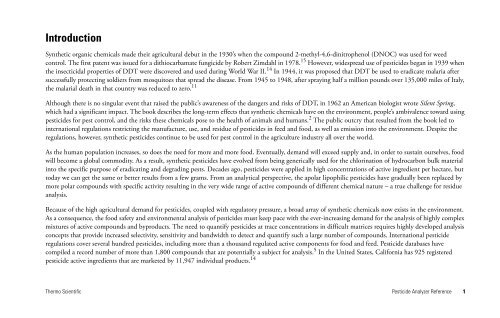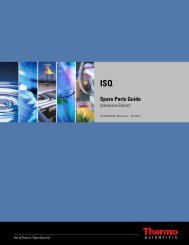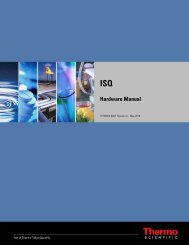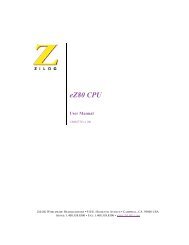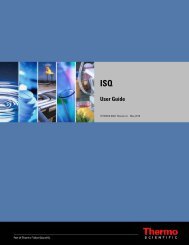Pesticide Analyzer Reference - writeframeofmind.biz
Pesticide Analyzer Reference - writeframeofmind.biz
Pesticide Analyzer Reference - writeframeofmind.biz
You also want an ePaper? Increase the reach of your titles
YUMPU automatically turns print PDFs into web optimized ePapers that Google loves.
Introduction<br />
Synthetic organic chemicals made their agricultural debut in the 1930’s when the compound 2-methyl-4,6-dinitrophenol (DNOC) was used for weed<br />
control. The first patent was issued for a dithiocarbamate fungicide by Robert Zimdahl in 1978. 15 However, widespread use of pesticides began in 1939 when<br />
the insecticidal properties of DDT were discovered and used during World War II. 14 In 1944, it was proposed that DDT be used to eradicate malaria after<br />
successfully protecting soldiers from mosquitoes that spread the disease. From 1945 to 1948, after spraying half a million pounds over 135,000 miles of Italy,<br />
the malarial death in that country was reduced to zero. 11<br />
Although there is no singular event that raised the public’s awareness of the dangers and risks of DDT, in 1962 an American biologist wrote Silent Spring,<br />
which had a significant impact. The book describes the long-term effects that synthetic chemicals have on the environment, people’s ambivalence toward using<br />
pesticides for pest control, and the risks these chemicals pose to the health of animals and humans. 2 The public outcry that resulted from the book led to<br />
international regulations restricting the manufacture, use, and residue of pesticides in feed and food, as well as emission into the environment. Despite the<br />
regulations, however, synthetic pesticides continue to be used for pest control in the agriculture industry all over the world.<br />
As the human population increases, so does the need for more and more food. Eventually, demand will exceed supply and, in order to sustain ourselves, food<br />
will become a global commodity. As a result, synthetic pesticides have evolved from being generically used for the chlorination of hydrocarbon bulk material<br />
into the specific purpose of eradicating and degrading pests. Decades ago, pesticides were applied in high concentrations of active ingredient per hectare, but<br />
today we can get the same or better results from a few grams. From an analytical perspective, the apolar lipophilic pesticides have gradually been replaced by<br />
more polar compounds with specific activity resulting in the very wide range of active compounds of different chemical nature – a true challenge for residue<br />
analysis.<br />
Because of the high agricultural demand for pesticides, coupled with regulatory pressure, a broad array of synthetic chemicals now exists in the environment.<br />
As a consequence, the food safety and environmental analysis of pesticides must keep pace with the ever-increasing demand for the analysis of highly complex<br />
mixtures of active compounds and byproducts. The need to quantify pesticides at trace concentrations in difficult matrices requires highly developed analysis<br />
concepts that provide increased selectivity, sensitivity and bandwidth to detect and quantify such a large number of compounds. International pesticide<br />
regulations cover several hundred pesticides, including more than a thousand regulated active components for food and feed. <strong>Pesticide</strong> databases have<br />
compiled a record number of more than 1,800 compounds that are potentially a subject for analysis. 5 In the United States, California has 925 registered<br />
pesticide active ingredients that are marketed by 11,947 individual products. 14<br />
Thermo Scientific <strong>Pesticide</strong> <strong>Analyzer</strong> <strong>Reference</strong> 1


